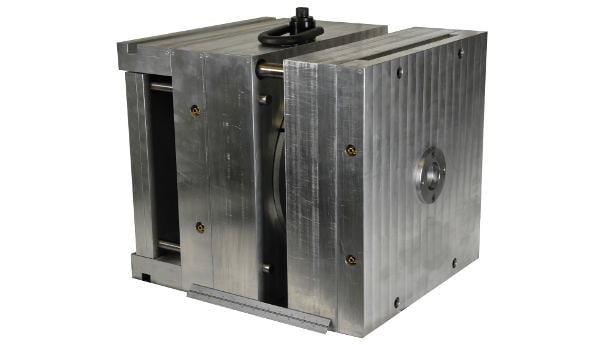Suggestion: Watch the 10 minutes video tutorial before reading this article
If you plan to import a custom designed or even private label product, chances are that you need get an injection mold manufactured in China.
In this article, you will learn when and how to order an injection mold, various methods of ensuring the ownership of the mold, payment terms and much more.
Note: While this article is primarily focused on injection molds, most principles can be applied to extrusion molds, blow molds, die casting and other tooling.
When is a custom mold needed?
If you intend to create a custom designed product, or make changes to an existing product design, you need an injection mold.
Injection molds are used for various materials, including plastics, glassware, ceramics, stainless steel and alloys.
As such, injection molds are used when making everything from phone cases and plastic buttons – to wristwatches and jewelry parts.

FREE CONSULTATION SESSION
- 1. How to create product designs & specifications
- 2. Finding suppliers in China, Vietnam & India
- 3. Shipping & import taxes (US, EU, UK & Australia)
- All attendees can ask questions!
- Best Regards, Ivan Malloci
At what stage should I buy a mold?
Your supplier needs the mold before they can even make a sample for you. As such, you need to buy the injection mold before the manufacturer starts the sampling process.
That said, you can use the same mold, as is used to make the prototype or sample, for mass production.
Most molds can be used to make hundreds of thousands, sometimes millions, of units. Thus, the mold can be used for many orders – and may even outlast the product design itself.

Can I expect my supplier to pay for the mold?
No, importing from Asia is like flying with a low cost airline. No extras are included, be it lab testing or injection molds.
As an importer, you must therefore finance the cost of the injection mold (and other types of molds and tooling for that matter) before you can start the sampling and mass production process.
How much should I pay for the mold?
That depends entirely on the size, complexity and material. For a simple component, say a watch case, the mold cost can be as low as $200.
However, for more complex products with narrow dimensional tolerance requirements (i.e., plastic pallets), the mold cost can be as high as $40,000.
That said, for most consumer goods, the mold fee is somewhere between $150 to $800.
As mentioned, the mold can be used for hundreds of thousands, if not millions, of units. Therefore, the cost per unit is often extremely low.
What are the standard payment terms for molds?
That depends mostly on the mold and prototype cost. If the total is below $1000, the buyer normally pays the entire sample and tooling cost up front.
If above $1000, you may pay 30% before they start producing the mold, and 70% upon completion and successful testing.
Keep in mind that most suppliers don’t make any profit of the mold itself, and therefore need to secure, at a minimum, a deposit before they order the mold and other tooling from their subcontractor.
Where can I find mold manufacturers in China?
Specialized injection mold manufacturers are present all over China, and its industrial cluster. However, there is a higher concentration of mold suppliers in Zhejiang, Jiangsu and Guangdong province.
Many mold suppliers are also based in Taiwan, even though a large percentage have moved production to the mainland.
That said, buyers rarely need to source mold suppliers on their own. Instead, the majority of importers use the injection mold suppliers, already used by their assembly manufacturer.
In the Watch industry, for example, none of the so called ‘Watch suppliers’ (they put the pieces together basically), manufacture injection molds for the various components needed.
Instead, they subcontract this to specialized mold and tooling suppliers.
For most products, it’s better to just use the suppliers existing network of mold suppliers.
That said, if they cannot match your technical specifications, you may want to consider contacting a mold supplier directly.
How can I protect mold ownership?
As you pay for the molds, you may assume that they are by default owned by you. That said, the ownership is practically impossible to claim, unless it is written on paper.
For example, you must state in the sales contract, that the mold is owned by your company, and can be collected at the supplier’s facility with short notice.
Does mold ownership equal IP ownership?
No, there is no relation between the two. Owning the mold doesn’t mean that your design is protected in any way. To ensure that your designs are protected, you need to file for a design patent (or design protection, if you are based in Europe).
That said, you can only protect a design that is ‘new and unique’. Hence, it’s not an option for most importers.
Where should the mold be kept?
The injection mold, and other tools, is normally kept in the supplier’s production facility, even when not used. This can pose a serious risk, as the supplier may use your mold to manufacture products for themselves – or other buyers – without letting you know.
To reduce the risk of this ever happening, you can store the injection mold at the premises of a trusted third party in China – and return it to the supplier before production, only to collect it once again after production completion.

How can I prevent my supplier from making a copy of my mold?
The short answer is that you can’t prevent them from making a 2nd version of your injection mold. As explained above, there are ways to make it harder for the supplier to steal your design, but you cannot stop your supplier if they really, really, want to copy your product.
The only way to truly protect your designs is by filing for design and utility patents, and get your brand and logo trademark.
This costs money, but there are no shortcuts.
That said, I think many importers overestimate the supplier’s interest in replicating their products.
It’s good to be aware of it, and implement measures that will at the very least make it harder for the supplier to copy your products – but the risk of IP theft should not hold you back from launching a product.
Do I need a mold when buying private label products?
By definition, a private label product is an existing factory designed product, and therefore you should not need to invest in new injection molds and other tooling.
Reality, however, is often quite different.
In China, most suppliers are primarily OEMs. Hence, they manufacture products according to specification – rather than developing their own products.
They are, for the most part, not true private label suppliers. At best, you may find that they have some generic designs available off shelf, with ready made injection molds.
Many of the products they upload on Alibaba.com and Globalsources.com are ‘for reference only’. In fact, what you see on their supplier page is in many cases products they have never even manufactured.
There’s nothing wrong with that. They use these directories to showcase what they have made in the past, and what they can make.
But don’t assume that there is a complete set of tooling for every product they list.
Can I use existing injection molds to make my product?
Yes, but as explained above, don’t assume that they have an organized catalog of ODM products for your choosing.
At best, they have a limited number of designs you can choose from.
But even then, you may for any of the following reasons not be able to use their existing injection molds:
a. Design changes: If you intend t make even the slightest design change, you need a new injection mold.
b. Ownership issues: Buyer ownership goes both ways. There are loyal and trustworthy suppliers out there, and they will not rent out molds from their customers to other (especially new) buyers.
c. Material changes: Injection molds can often only be used for specific materials. Even if you find a design you like, you can only use it for the material (i.e., PP plastic or Zinc Alloy) that it was made for. If you want to change materia (i.e., to TPU plastic or 316L Stainless Steel, you need to pay for a new mold.
Can I take the mold with me if I change suppliers?
Yes, at least in theory, and assuming that you are the actual owner of the mold. That being said, don’t assume that your supplier will let you take the mold without putting up a fight.
They can make up all sorts of reasons, and some suppliers will not care about previous agreements.
If you plan to ‘break up’ with your supplier, collect your molds weeks or even months before you let them know.
You may even want to create a 2nd set of molds, to use as a backup, if you ever get into a dispute with your supplier (in which case, they are very likely to use your molds as a collateral).
If you would ever lose access to your molds, you will face a severe supply chain disruption, as you will be forced to source a new supplier and buy an another mold – a process that can easily take 4 to 5 months.
How long time does it take to make the mold?
That depends on the complexity and size of the mold, but smaller molds normally take around 30 to 40 days to produce and adjust.
Adjusting the mold can be both time consuming and unpredictable, which is why it takes such a long time.
In many cases, additional adjust are needed, even after the initial 40 days spent.
What should I look for when selecting an injection mold supplier?
As mentioned, you may not even need to source an injection mold manufacturer by yourself. For most products, it’s easier and even safer to use the supplier’s existing mold supplier.
That said, if you for any reason decide to try finding one on your own, use the following checklist:
1. Do they make molds related to your product?
2. Do they make molds for the same type of plastic or metal you plan to use?
3. Does their business scope include the term ‘mold’ or ‘tooling’?
4. Do they have a registered capital of at least RMB 1,000,000?
5. Do they have a quality management system in place? (i.e., ISO 9001:2015)
6. Do they have any references from customers in your target markets?
7. Do they allow you to store the mold with a trusted third party? (rather than keeping the mold in their own factory).
Can I find mold suppliers on Alibaba.com and Globalsources.com?
Yes, there are thousands of injection mold suppliers listed on Alibaba, and at least a few hundred of Globalsources.com.
Use can use their supplier filtering functions, and use the data, to ensure that the suppliers match the requirements outlined in the checklist above.
Can I find mold suppliers at Trade shows?
Yes, there are often molds and tooling suppliers present at the Canton Fair, and the various trade shows in Hong Kong hosted by HKTDC and Globalsources.com.
That said, most are specialized to make molds for a specific industry, so you will find them as part of the broader supplier spectrum.
Do I need to pay import duties, VAT or other taxes on the mold?
The cost of the injection mold must be included in the customs value. As such, you will need to pay import duties and other taxes.
This is the case even if the injection molds remain with the manufacturer in China, and never even crosses the border.
You can either choose to include the full cost of the injection mold in the customs value of your first shipment, or split it up over several shipments.
Notice that this is applicable also to samples costs and service fees paid to the supplier, and not only the injection mold.
Are there any regulations or safety standards applicable for molds?
Product safety standards are normally not applicable to the mold itself, but to the finished product.
Product regulations do affect the injection mold, in the sense that you need to ensure that the design is safe for the end consumer.
In addition, the material must also comply with relevant chemical and heavy metals regulations.






















Such a great article! I do have a question for you. We just finished with our final design that is injection mold ready and have already had many prototypes made with 3d printing. We are ready to purchase a mold but our product is the first of its kind and we have a design and provisional patent as well as a trademark. Is it possible to buy a mold from China and have it shipped here and have someone else hold it to actually manufacture the product? Please let me know! Thanks again for the great article.
Hello Jocelyn,
Yes, certainly. The mold does not have to stay in China.
Hello, Mr. Fredrik!
My name is Timur, I’m representative from UzAuto Motors Company (former General Motors Uzbekistan). We are the only car manufacturing company in Central Asia. Now we are working on a project for the production of new cars (GEM program – B car and SUV car) and searching for a stamping dies for in-house stamping parts (roof, hood, lift gate, door, fender etc.). We would like to know if you produce the die tooling for in-house parts?
Thanks for the information!! It will help many people looking for mold manufacturer in China. Though I am living in Michigan and for all my Blow Mold Tooling needs, I trust “Monroe Mold”. I know them from last 15 years and I believe they have pioneered every bit of extrusion and plastic manufacturing process.
Hello Sarah,
Thank you for sharing!
Hi we have a factory supplying domestic tap waters . At the moment we buy the cartridges from other importers ,however we want to manufacture the cartridges ourselves.
We want to order some plastic injection moulding and one or two ceramic moulding .
Could you please advise me how to go about it and whom to get in touch with.
I thank you in advance for your kind consideration to this email. Mr Hatami
Good information!
Yes, different materials are made by different processing. For example, when your new project is a metal part, you should not find a plastic manufacturer.
If it is made of metal, do you know what the processing it should be? If not sure, do you have samples or prototypes available? All manufacturers custom make parts as per samples or prototypes or 3D drawings. If you have more than one samples/protoypes available, you can send one to the manufacturer to know whether it is in their field.For us, if it is not within our capabilities, we can usually help to transfer the sample/prototype to other factories as per the customer’s request. Metals are usually made by die casting(it is also called metal injection molding or MIM), stamping, or extruding.
If it is made of plastic, they can usually be made by plastic injection molding, blow molding, rotocasting, extruding, rotational molding,etc. Also, plastic injection molding is the widest used method. For which processing, it depends on the design or constructure of the part. If you are not sure, come to me for help.
Thanks for sharing this information!
Hello can share China
tool and die manufacturer details